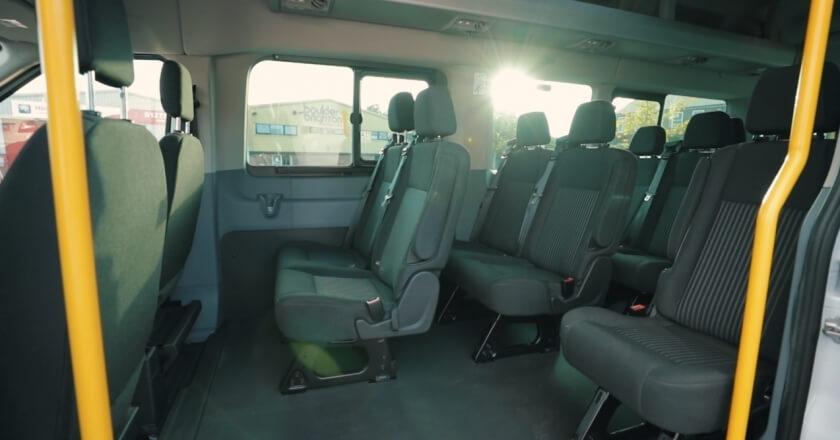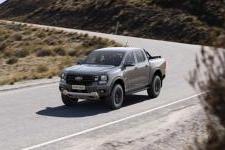School Minibuses - A Safety Guide

This blog is to help organisations (minibus drivers included) understand what checks are required before you can safely drive a vehicle that seats over 8 passengers …
View our Minibus Leasing Prices
Permit requirements for school minibuses
There are two types of permits: a ‘Section 19 Permit’ and a ‘Section 22 Permit.’
Section 19 Permits
These permits allow private organisations such as schools to make a charge for being transported on a minibus vehicle without having to conform with the full PSV licensing requirements and without the need for their driver to have a PCV (category D1 or D) entitlement.
Schools must hold a ‘Section 19 permit’ if minibus trips are funded by parents or parent teacher associations.
All drivers must comply to the following conditions whenever a minibus permit is used;
a) The minibus must only be used by the organisation whom the permit has been granted, or by affiliate/associate members of that organisation
b) Minibus must not be used by members of the general public
c) Minibus must not be used for profit or monetary gain.
d) Minibus must meet the requirements set by the Construction and Use Regulations
e) Permit discs must be displayed on the vehicle windscreen (on the nearside and the near lower edge) and be clearly visible from the outside of the vehicle.
It should be noted that teachers who drive a minibus without the required section 19 permit can face a risk of prosecution with penalty points and fined up to £2,500. The organisation that allowed the driver to drive a minibus without the right licence will also be prosecuted of under section 87 of the road traffic act of 1988.
Section 22 (Community Bus) permits
The Section 22 permits are sanctioned under Section 22 of the Transport Act 1985, to organisations that provide a local bus service on a non-profit basis. The main difference between section 19 permits and section 22 permits is that members of the general public can be transported in the minibus.
Driving licence requirements – Different sized buses have different licensing requirements and can mean the difference between needing a D1 category or not. why not call us on 01273 433480 and ask one of our experts to guide you through the requirements.
Driving license requirements for minibus drivers
Every minibus driver, by law, should follow these protocols;
✔ï¸A valid permit must be displayed, if functioning under a section 19 or section 22 permit scheme
✔ï¸You’re over 21 years old
✔ï¸You’ve had a full car driving license for at least 2 years
✔ï¸You meet the Group 2’ medical standards if you’re over the age of 70; be sure to visit your GP if you’re unsure you meet these regulations
✔ï¸Maximum weight limit should never be exceeded – 3.5 tonnes (or 4.25 tonnes if specialised equipment for disabled passengers, for example a wheelchair ramp)
✔ï¸Not drive a minibus with more than 16 passenger seats
✔ï¸You’re not towing a trailer
See more at: www.gov.uk/driving-a-minibus
If you obtained your car driving license before 1 January 1997
Drivers who passed their driving test before 1 January 1997 can automatically drive a minibus in the UK because their license falls under the D1 category. Drivers that have a 101 next to their license are not permitted to drive a minibus for hire or reward.
If you obtained your car driving license after 1 January 1997
Drivers who passed their car driving test after 1 January 1997 are only permitted to drive a vehicle with eights seats. To drive a minibus, drivers will need to pass the additional category D1 test, plus a standard theory test and medical examination.
Safety recommendations for school minibuses

Number of drivers
Despite there being no legal requirement for a second minibus driver, the NUT (National Union of Teachers) advises that there should be another trained minibus driver present to accompany the teacher in case of any emergencies or driver fatigue on long journeys. But if it is only for a short journey, then a second driver isn’t required.
If there are two trained drivers available and only one is a teacher, then the non-teacher should always be the main driver. The second driver should act as a supervisor and ensure that the passengers seated in the back are always well behaved so that the driver can concentrate fully on the road.
NUT also advice that mobile telephones should ALWAYS be available in the event of an emergency.
Seatbelts
Minibuses transporting three or more children, by law, should have forward facing seats and seatbelts. It is required that either 2-point (lap) or 3-point (lap and diagonal) belts to be fitted; although 3-point belts provide more protection if an accident ever occurs.
Other points to consider;
✔ï¸The belt should always feel tight and secured
✔ï¸The lap should go just above the pelvic section, not the stomach
✔ï¸Child restraints should be securely fitted according to the manufacturer’s instructions and the child should be securely held in the restraint
Emergency equipment
Every minibus must carry a British Standard fire extinguisher of water or foam, with a minimum test rating of 8A or 21B. If there are passengers in wheelchairs, then the minibus should be equipped with two fire extinguishers. All fire extinguishers should be tested at least once a year, plus all drivers and teachers should be trained on how to properly use a fire extinguisher. The law also states that there should be always be a first aid box. It is the responsibility of the driver to check all items are available and easy to access.
Fire Hazards
As the safety of passengers is priority, you should always make sure they are first to be evacuated and moved far from the vehicle. Contact the Fire and Rescue services immediately and do not attempt to put out the fire yourself – especially under the bonnet fires.





